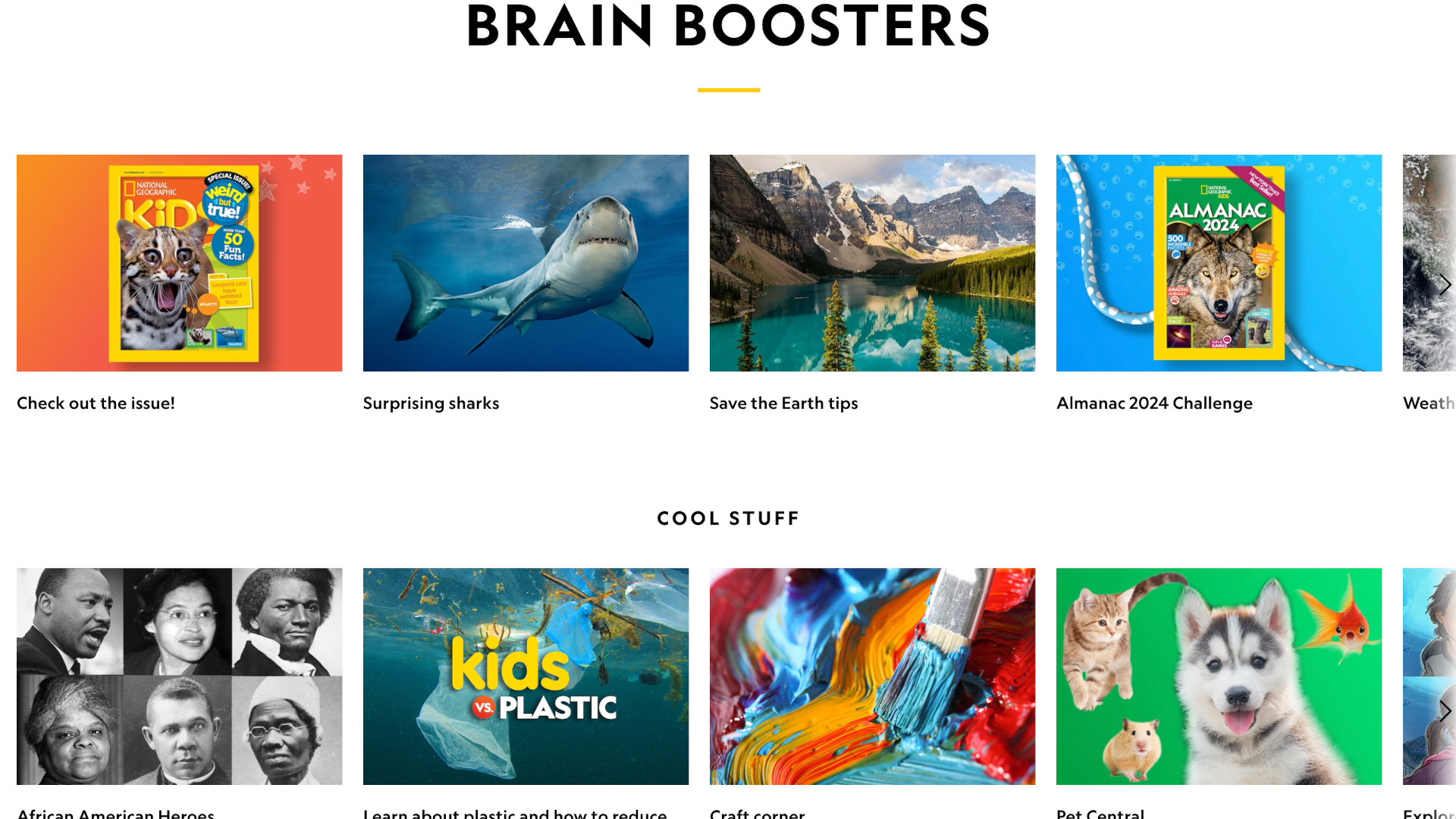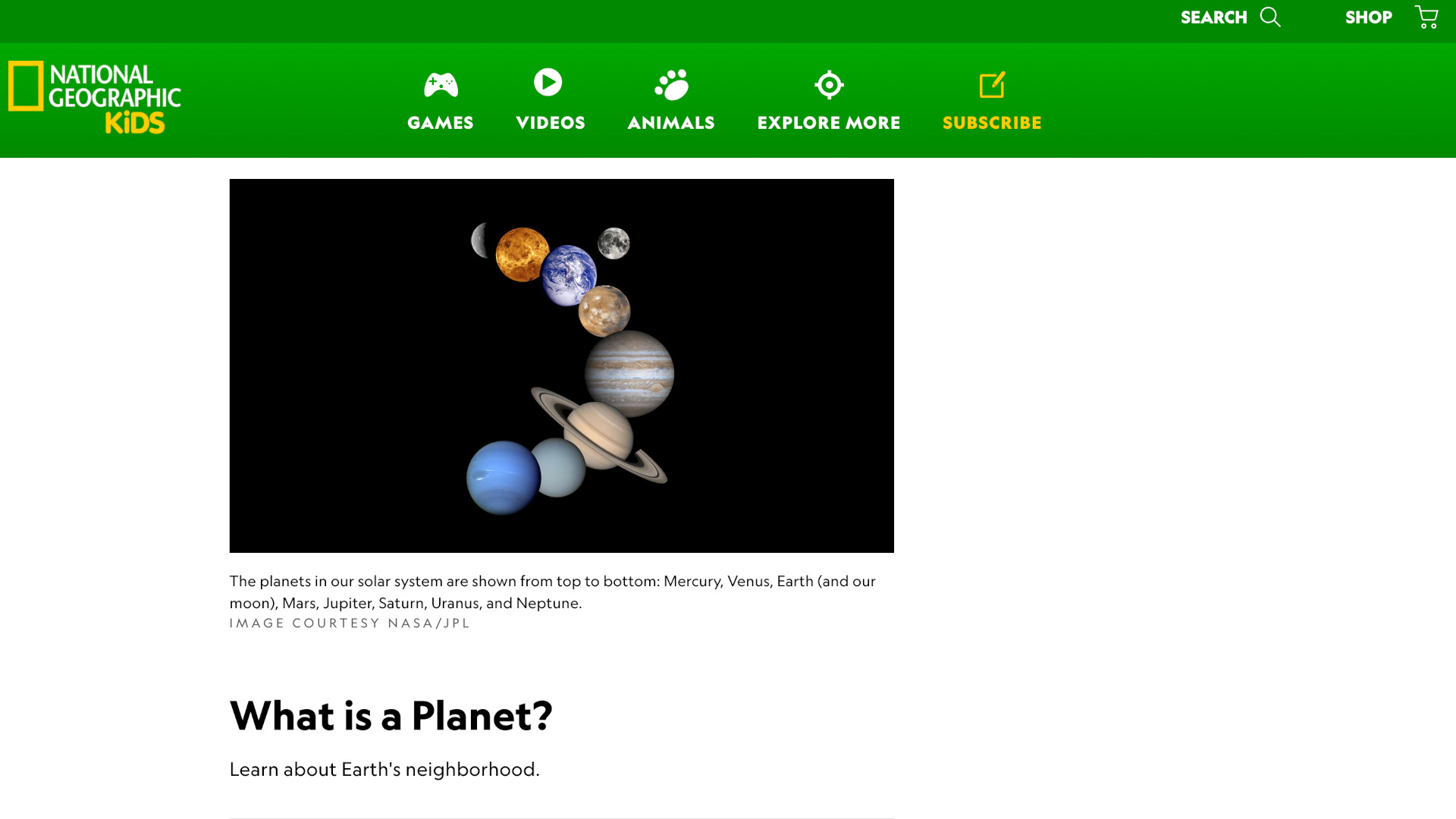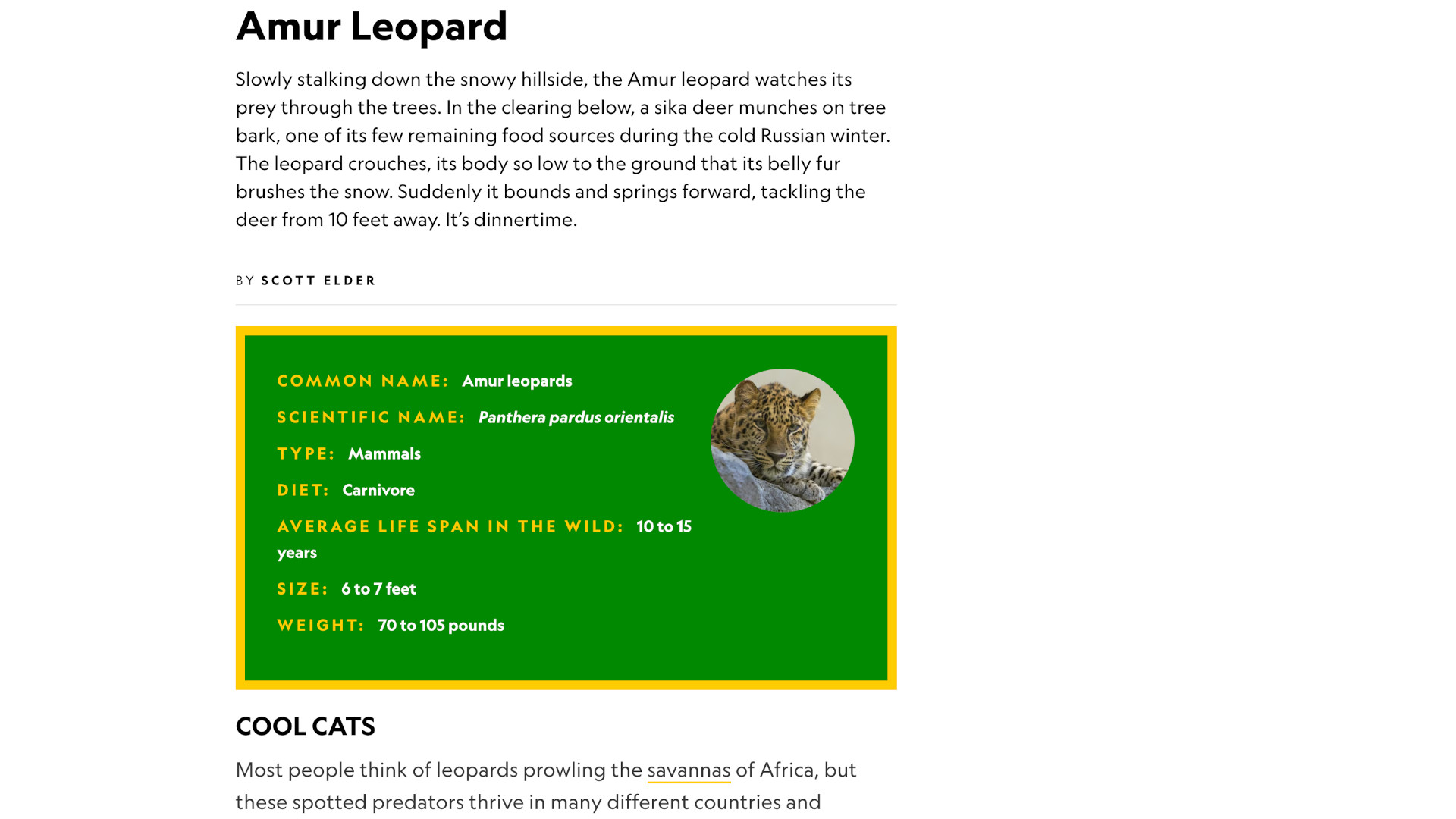
National Geographic Kids takes the famed publication's traditional photography and reporting background and distills that into a one-stop-shop for nature, history, and more for young visitors.
From rare culture to natural curiosities to outer space, the website is crammed full of compelling and eye-catching content that will engage a wide range of ages. As such, this is a potentially useful resource for educators and a place kids can visit in their own time to continue their learning journeys.
Reading is required so that might not be ideal for the youngest of potential users, but with guidance it can be accessed with ease. Crucially, this is a free resource, making it very helpful to anyone with a device that can access it via an internet connection.
From images and videos to games and more, this is all you need to know about what the National Geographic Kids website has to offer.
What is National Geographic Kids?
National Geographic Kids is a web-based resource that comprises videos, images, games, and articles that cover a range of subjects, including the natural world, history, and more.

This site can be browsed casually or used as a teaching resource to help introduce kids to new material in an accessible and visually engaging way. Since this is web-based, nearly any device can access its wealth of content with ease.
While lots of the content comes from the publication's reporting, there is also plenty from the National Geographic TV channels too, only in more condensed and accessible formats of between one and five minutes long. All that makes this great for a range of students in terms of both ages and abilities.
While there is plenty of content covering the natural world, this is focused largely on animals with a dedicated section for them, broken down into helpful chunks.
How does National Geographic Kids work?
National Geographic Kids is all laid out on the website in easy browsable categories that narrow as you explore. Equally, there is a search bar making direct hunting of specific content possible too.

National Geographic Kids offers its wealth of content for free without the need to give any details, so you can access it all right away as an educator or a kid.
Sections break down into Games, Videos, Animals, and Explore More. The first section, Games, features puzzles, action games, and funny fill-in options. The second, Videos, has Amazing Animals, Weird But True, Party Animals, and Try This. The third, Animals, offers mammals, birds, prehistoric, reptiles, amphibians, invertebrates, and fish. The fourth, Explore More, has magazine, history, science, space, U.S. states, and Weird But True sections.
It's also possible to subscribe to get informed via email, on a regular basis, of new content that gets added and any special events that might be coming. Or to subscribe to the magazine itself, but more on that below.
What are the best National Geographic Kids features?
National Geographic Kids offers some great videos, with content from National Geographic's nature films and information shows. The brief nature of them, at under five minutes, makes these easy to digest and a great addition to class-time learning.

Independent exploration is an option here as students can delve into the animal section, for example, and discover new species, from the amur leopard and wolverine to the caracal and luna moth.
The games section allows students a way to explore animals, perhaps by matching sharks, or places, such as traversing a maze in Egypt, or languages, playing the fill-in games that ask for words to match headings linked to an image such as 'adjective' or 'noun.'
Games range from code breaking, recycling, the gods of old, national parks, and more. Or explore the U.S. states or countries of the world, learning about these as you virtually travel the options.
Educators also have access to further learning resources including crafts, gemstone learning, science experiments, and beyond. Sections in the Homework Help area teach kids how to be an expert fact checker, write an animal report, and so on -- although navigating to these resources isn't as logical as you might hope.
How much does National Geographic Kids cost?
National Geographic Kids is free to use with no need to sign up and no adverts to get at the rich content.
It's worth noting that there are quite a few links that try to up-sell, taking you off to subscribe to National Geographic Kids and National Geographic Little Kids magazines, plus a link to the National Geographic Store. So you may need to keep an eye on use by younger children using smart devices that can subscribe with just a click.
National Geographic Kids best tips and tricks
Build for the future
Allow students the time to explore on their own, learning how to navigate content and dive deeper as they take an interest in an area -- setting them up for future online learning explorations.
Reward kids
Use the short videos as a reward to break up learning or exercises in a class, while still keeping that video time educational for them.
Theme weeks
Dive into a different animal or species type each week with extra content taking it further than the introduction you can use from the website itself. Use the extra resources for break-out work to follow-up and help learning.
To share your feedback and ideas on this article, consider joining our Tech & Learning online community here







